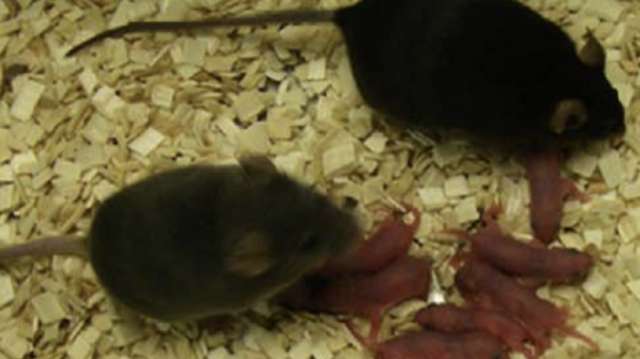In the new research, the scientists took these inactive embryos and injected sperm directly into them, which resulted in the birth of healthy baby mice with a success rate of up to 24 percent.
The experiment produced the first ever full-term live mice born from parthenogenotes that were injected with sperm, senior author of the study Tony Perry, a molecular embryologist at the University of Bath in England, said in a statement.
"It had been thought that only an egg cell was capable of reprogramming sperm to allow embryonic development to take place," Perry said. "Our work challenges the dogma, held since early embryologists first observed mammalian eggs around 1827 and observed fertilization 50 years later, that only an egg cell fertilized with a sperm cell can result in a live mammalian birth."
In order to keep the parthenogenotes from perishing as they normally would, the researchers exposed them to a salt compound called strontium chloride (SrCl2). Previous research had shown that this salt encourages parthenogenetic embryos to begin normal cell division, despite not having been fertilized. The chemically modified parthenogenotes were then injected with the sperm and implanted into surrogate mothers.
The research upended the notion that mammalian sperm cells could only transform into mature sperm cells when they were within an egg — it was thought that only the egg provided the environment for division to begin, and a complex organism to develop. But the new experiment has shown that a parthenogenote can serve the same function as an egg — under the right conditions.
The mice born from the experiment were seemingly healthy, the researchers said. Their life expectancies were similar to those of control mice that were bred traditionally, and they were able to reproduce.
However, the mice born from the parthenogenote experiment had different epigenetic signatures in their DNA, compared to mice born from traditional fertilization. Epigenetic signatures are chemical modifications that are made to a DNA code, outside of the DNA "letters" themselves. The researchers suggest that this means that different epigenetic pathways can lead to the same developmental destination.
As the research continues, reproduction techniques that use parthenogenotes and sperm could be applied to conservation efforts in the breeding of endangered animals, and help treat infertility and other reproductive issues, the researchers said.
"This is an exciting piece of research which may help us to understand more about how human life begins and what controls the viability of embryos, mechanisms which may be important in fertility," Paul Colville-Nash, from the Medical Research Council (MRC), which funded the work, said in the statement. "It may one day even have implications for how we treat infertility, though that`s probably still a long way off."
The study was published online Tuesday (Sept. 13) in the journal Nature Communications.
More about:
















































